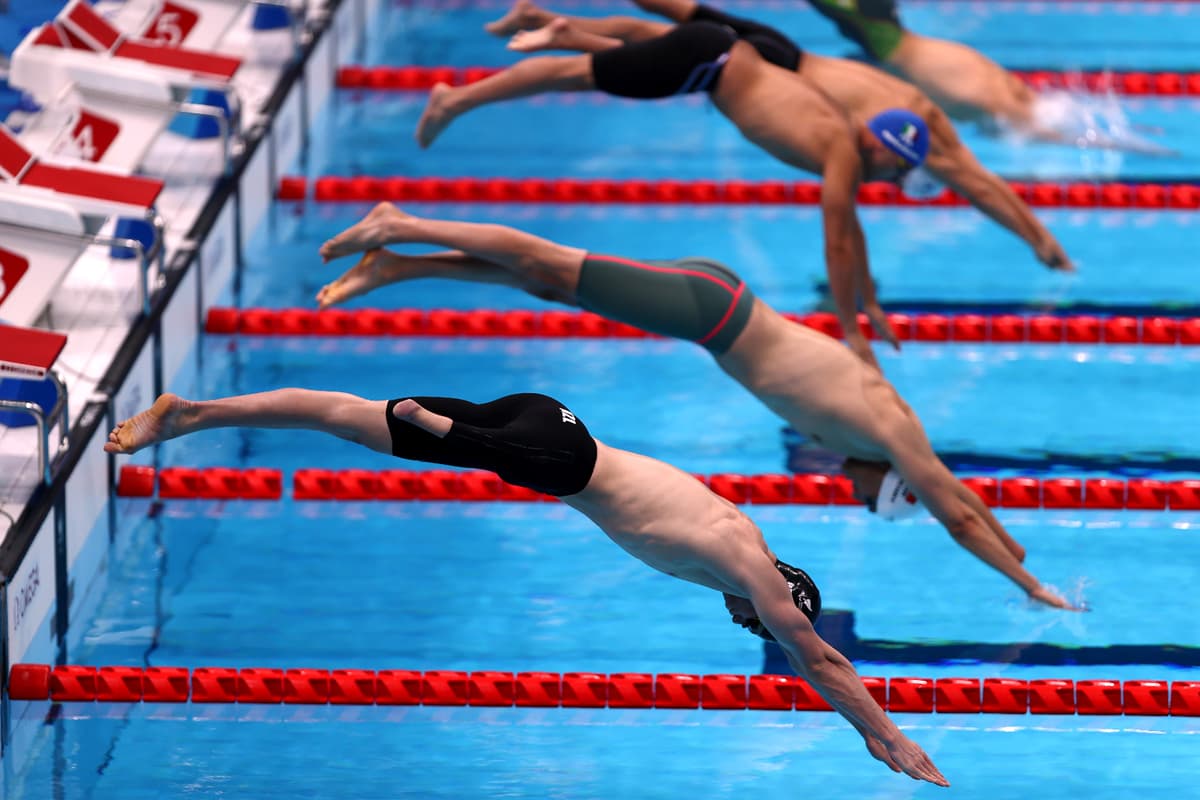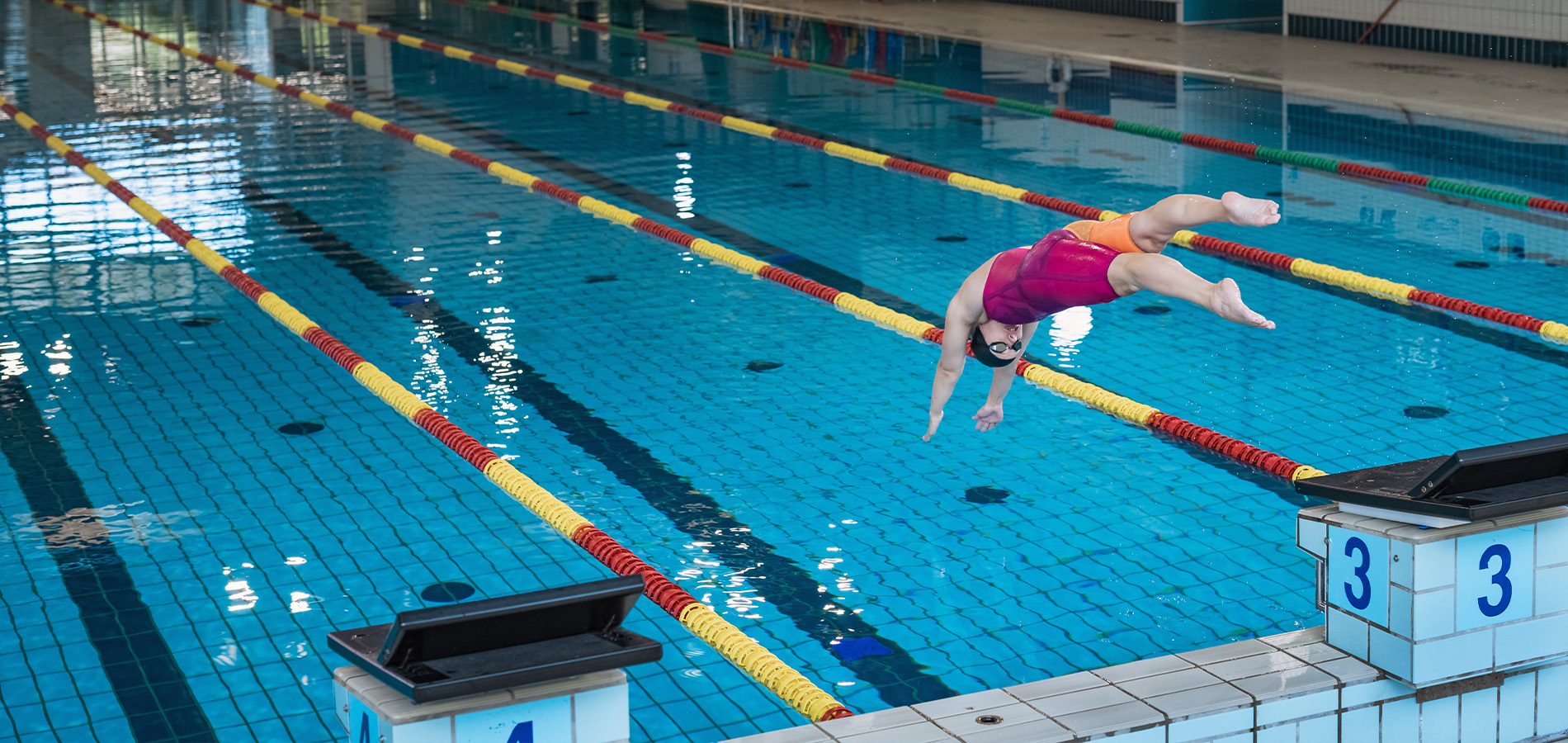In Paralympic swimming, classification is crucial because it ensures fair competition by grouping athletes with similar levels of impairment. This system allows swimmers with different disabilities to compete on an even playing field, showcasing their skills and abilities without being disadvantaged by the severity of their impairments.
1. Categories of Classification
Swimmers are classified into three main categories based on the type of impairment they have:
a) Physical Impairments (S1 – S10)
This category includes athletes with physical disabilities. The classification is based on the severity of the impairment, with the numbers representing different levels:
- S1 to S3: Severe impairments, such as significant muscle weakness or limited mobility (e.g., a swimmer with reduced muscle strength or severe joint restriction).
- S4 to S6: Moderate impairments, such as joint restrictions or muscle weakness that moderately limits mobility.
- S7 to S10: Mild impairments, where the swimmer may have only minimal effects on their body’s function, such as mild joint stiffness or slight muscle weakness.
In these categories, the lower the number (S1), the more severe the impairment. As the number increases (S10), the impairment becomes less severe.
b) Visual Impairments (S11 – S13)
This classification is for athletes who have varying degrees of visual impairment:
- S11: Total blindness or very little sight. These swimmers may use guide rails or audio signals during races.
- S12: Swimmers with limited vision, but they can still distinguish some shapes or shadows.
- S13: Swimmers with mild visual impairments, who can see with partial or limited vision, but still face challenges in low-light conditions or recognizing details in the water.
c) Intellectual Impairments (S14)
This category is for athletes with intellectual disabilities, which can affect memory, reasoning, or processing speed. Athletes in this category compete across multiple swimming strokes, and the classification ensures that athletes with similar cognitive abilities race against each other, maintaining fairness in the competition.
2. Why Classification is Important
Classification ensures fairness and allows athletes with different types of impairments to compete against others with similar levels of disability. Without classification, athletes with severe impairments would be at a significant disadvantage compared to those with mild disabilities. By separating athletes based on the severity of their impairments, classification helps provide each swimmer with an equal opportunity to succeed. It allows for a competitive environment where athletes are judged based on their individual talents, rather than the extent of their disability.
3. How Classification Works
The classification process involves multiple steps to assess the level of impairment and how it affects an athlete’s ability to swim. This ensures that athletes are placed in the correct class.
a) Medical and Physical Assessments
Athletes undergo comprehensive medical evaluations that include assessments of their physical impairments. This helps determine the level of impairment and the best classification for the athlete.
b) Technical Assessments
Athletes are also evaluated during training and competitions to see how their impairment affects their swimming performance. This can include tests of flexibility, strength, endurance, and technique.
c) Observation in Competition
Once classified, swimmers are observed in actual competition settings. If their performance deviates significantly from the expectations for their classification, they may be reassessed to ensure they are competing in the appropriate category.
4. Classification Status
After an athlete is classified, they receive one of the following statuses:
- Confirmed: This means that no further assessments are necessary unless new medical evidence arises (e.g., progression or change in the impairment).
- Review: This status is for athletes whose impairments may change over time, so they are subject to periodic re-evaluation.
- Provisional: Temporary classification status for new athletes or athletes awaiting a full assessment.
5. Challenges And Overcoming Barriers
While classification in Paralympic swimming is a complex process, it plays a key role in ensuring a fair and competitive environment for all athletes. Swimmers face challenges related to their disabilities, but their high level of confidence, training, and determination allow them to overcome these obstacles and perform at the highest levels. Classification helps level the playing field, giving athletes with different types and levels of impairments the opportunity to showcase their unique abilities.
Conclusion
The classification system in Paralympic swimming is essential for maintaining fairness, ensuring athletes are grouped according to their level of impairment, and allowing them to compete at the highest level. It is a comprehensive process that takes into account the nature and severity of an athlete’s disability, and it is central to creating a competitive environment where each swimmer can excel based on their skills and determination.



